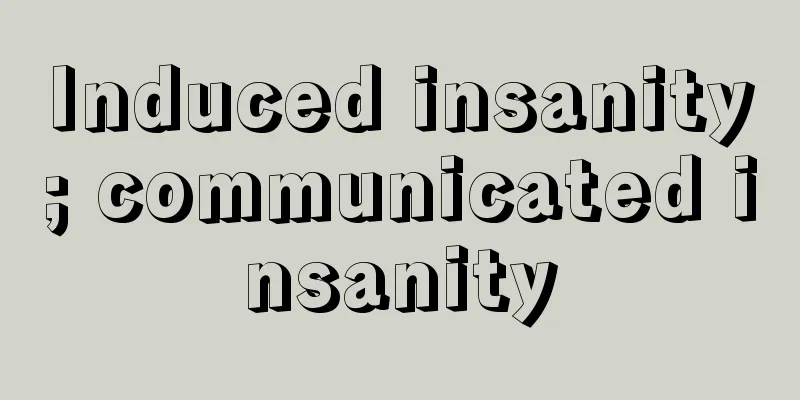Induced insanity; communicated insanity

|
A mental illness that occurs in a person who is in a close relationship with a mentally ill person in terms of daily life or experiences, and is identical to or integrated with the symptoms of the mentally ill person. Symptoms include delusions, hallucinations, confusion, delirium, fainting, and convulsions, but are essentially psychogenic reactions. It is most likely to occur between pairs of people, such as parents and children, spouses, or siblings (dyadic psychosis), but it can also occur between three, four, or even multiple people. Source: Encyclopaedia Britannica Concise Encyclopedia About Encyclopaedia Britannica Concise Encyclopedia Information |
|
ある精神病者と日常生活や体験などにおいて密接な関係にある人に,その患者の病状と同一の,あるいは一体となった形で発症する精神病。妄想,幻覚,錯乱,せん妄,失神,けいれんなどの症状を示すが,本質的には心因反応である。親子,夫婦,同胞など,2人組の間に起りやすい (2人組精神病) が,3人,4人,あるいは多数の間にもときにみられる。
出典 ブリタニカ国際大百科事典 小項目事典ブリタニカ国際大百科事典 小項目事典について 情報 |
Recommend
Model Laborer - ousou mohan (English spelling)
In China, the title of model worker is given to th...
Fishing hook - Fishing line
The title of a Kyogen piece. Tarokaja Kyogen. In ...
Osone clan - Osoneuji
A group of warriors from the Kamakura period. Thei...
Rodrigo Díaz de Vivar (English spelling)
Rodrigo Díaz de Vivar was a hero of the medieval ...
Crane, Stephen
Born November 1, 1871 in Newark, New Jersey. Died:...
Aden Protectorate
...With the opening of the Suez Canal, its value ...
Farmhouse (farmhouse) - Nosho
Private land owned by the royal family, aristocrat...
Yellow pineapple - Yellow pineapple
...It is distributed from Hokkaido to Kyushu and ...
Conservatorio Santa Maria di Loreto (English name)
...In other words, the Ospedale della Pietà (1346...
RATO
…A rocket engine is used as an auxiliary to incre...
Booth, JW
In 1869, he opened the Booth Theatre in New York,...
Bohemian
〘Noun〙 (Bohemian bohémien, someone who lives in Bo...
periaktoi
…For example, ancient Greek theatre was first per...
Payen, A. (English spelling) PayenA
...Enzymes have thus come to have a deep connecti...
Tokushima [city] - Tokushima
A city in the northeastern part of Tokushima Prefe...









